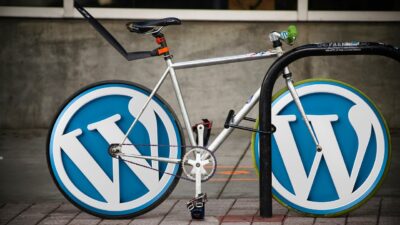If your website is experiencing 404 errors, this could be indicative that there is a deeper underlying problem with your site. The 404 error is indicative of a website page that is not able to be loaded because the file was not found.
In the event that this problem is on the back end of your website, it can mean gibberish data is displayed in the content output area.
For the user, a 404 error can also mean an unhappy experience with your website. As such, it is pivotal to mitigate these errors. Continue reading to learn more about this information!
Diagnosing Website 404 Error Issues
A website error is the result of a website page being lost, deleted, or not found on the server hosting it. To diagnose this issue, an initial check should be done to make sure that the URL entered into the browser is correct. The page is still currently hosted on the server.
If the URL is correct, then the server hosting the page needs to be contacted to confirm the page is still hosted. If not, the webmaster will need to recreate the page.
If the page is still hosted, the next step is to check the DNS server and confirm that it is set up. If the DNS is not set up, the accessibility of the page will need to be fixed before it can be accessed. Permissions and encryption settings need to be double-checked to ensure they are not preventing a user from accessing the page.
What Causes a 404 Error?
A 404 error occurs when a user tries to access a web page that does not exist on the server. It is a client-side error, meaning that it is a problem with the website itself, not the user’s computer or connection. This error often appears when an invalid URL is entered, a link on a website does not work, or the web page has been deleted.
It can also appear when a user attempts to access a website that is restricted or blocked for some reason. Different web browsers may show different messages for the same type of 404 error. It is important to determine the cause before attempting to fix the problem.
The Requested Page Is Not Found on the Server
This indicates that the server cannot find the page you are looking for, which may be due to a page that has been moved or deleted or the URL that was provided was incorrect.
This error is displayed using the HTTP 404 code. If you encounter this error, the first thing to check is the URL of the page you are attempting to reach.
The Page Has Been Removed From the Server
The reasons why the page may be removed could include a site redesign, server transfer, or the page being taken down and no longer available.
Thus, unless the page is archived or saved elsewhere, the user will no longer be able to access it. Prevent feeling the sting of disappointment when this message appears. Users can save web pages of particular importance as bookmarks or download preferred content as files.
The Wser Has No Access Permission
When a user has no access permission, they cannot access the system, program, or files that they need to be able to use. This poses a serious security risk, as it means the user is unable to access resources that could be critical for their job.
It also means the user is not able to stay in compliance with policies and procedures.
The Server Is Overloaded or Under Maintenance
If the server is “under maintenance,” it means the system administrators are making changes or upgrades to the server’s system, and it usually requires taking the server offline.
This can cause disruptions in service since requests can’t be processed until the maintenance is complete. In either case, it’s important for the server administrators to check and adjust the server as needed to provide the best service.
It can help to upgrade the server’s hardware to increase its capacity and also to spread the load more. Regular maintenance can also prevent overloading and keep the server running.
Understanding the Impact of 404 Errors
The impact of 404 errors can be significant, as they reflect on the professionalism of the business or website associated with the page.
It creates a poor user experience and may lead to potential customers leaving a website and not coming back. Additionally, website owners have to be mindful of SEO rankings, as 404 errors can reduce search engine rankings and traffic.
Poor User Experience
Poor user experience is a key issue in the ever-growing world of digital media. People expect websites, apps, and product designs to be intuitive and easy to use, but when the user experience is poor, users become frustrated.
Poor design can lead to long loading times, illogical elements, and overly complicated functions.
Reduce SEO rankings
404 errors can reduce your website’s SEO rankings. SEO rankings are determined by how many people visit your website, how long they stay on it, and how often they visit it.
If your website has a 404 error, it shows a bad user experience, and the visitor will move on to another website. This will decrease the number of visitors to your website, reduce the length of their stay on your website, and reduce website visits over time.
Loss of Web Traffic
There is a loss of website traffic as visitors are no longer able to access the content they are looking for and are likely to leave the website. This can be detrimental to businesses, as these lost visitors represent potential customers and revenue, as well as potential SEO benefits.
A 404 error is encountered by visitors, which can create a bad reputation for the website. This may cause people to distrust the website and lose confidence in it.
404 errors can have an especially detrimental effect on e-commerce websites. People are more likely to look elsewhere if the page they’re trying to access doesn’t exist. This can result in a dramatic decrease in website traffic as well as a loss of potential customers and revenue.
Loss of Credibility
Whenever this error occurs, a website’s credibility and reputation are put in jeopardy. Not only does the error take away from the user experience, but it also makes users think twice about whether they can trust the site or not.
This error undermines a website’s trustworthiness as well as its ability to drive users to take action on the website, from purchasing products to signing up for newsletters.
Best Practices to Avoid 404 Errors
Best practices to avoid 404 errors include updating and improving webpages. This should also include checking existing webpages and ensuring all links are maintained.
Ensure All Urls Are in Your Database
Ensuring all the URLs are in your database is an important task when maintaining a website or application. It’s important to review and audit your database for any broken or modified URLs that need to be updated or deleted.
This can be done by checking the URLs or using software tools. Additionally, you must ensure that all URLs are set up for both visitors and search engines.
For search engine optimization, it’s important to include descriptive words in the URL. Use hyphens to separate words and use relevant keywords. It’s also important to keep URL lengths small and avoid the use of underscores.
When creating URLs, ensure they are shorter, unique, descriptive, and memorable. Ensure that all URLs in your database are functional and searchable. are free of typos, mistakes, and any other errors before they are published or updated.
Set Up Redirects to Avoid Missing Pages
It is important for webmasters to know how to set up redirects to avoid missing pages. Redirects enable webmasters to direct visitors to an alternative page in the event that the requested page is no longer available.
This is useful when webpages are moved or deleted. Allow visitors to still access relevant content instead of being met with an error message.
Creating a 301 redirect from the incorrect URL to the new address will ensure that visitors are directed to the correct page. Search engines recognize the new address.
Creating redirects can help improve SEO and search engine rankings by connecting broken links. This prevents many pages from competing for the same keyword phrase.
Add a 404 Page With Useful Information
A 404 page is an essential part of any website. It should provide helpful information when a user is unable to find a page. A 404 page should contain options to help a user find what they are looking for.
This includes things such as a search bar, links to other important pages, and an explanation of what a 404 page is. Interesting content that is relevant to the website can be included to make the 404 page entertaining and unique.
Fun design, online games, or even jokes can help. A polite and apologetic tone should also be used if possible.
A 404 page with useful information can help create a pleasant and rewarding experience for website visitors despite not finding the page they were looking for. If the page is no longer available, add a 404 page with useful information to avoid visitors being lost.
Track all 404 errors and apply best practices to prevent them from happening again in the future. By taking these steps, you can ensure that your website visitors always receive the best experience possible.
How to Choose the Right Web Design Agency for 404 Error Solutions
One of the most important things to consider is whether the agency has experience developing web solutions for 404 errors. It is wise to ask the agency about their experience with 404 errors and how they have resolved these issues in the past.
This can tell you a great deal about the agency and the quality of work they are capable of producing.
Consider the Budget
Configuring your website budget is important when selecting the best web design agency. Estimating the full cost associated with website design and digital marketing is tricky.
That’s why it is recommended to look for a reliable responsive web design agency that suits your budget. Also, when calculating your budget, take into account the upfront cost, design fees, usage fees, hosting fees, and ongoing maintenance fees.
Consider the Reputation of the Agency
A good reputation is a sign that the agency has a strong track record of providing high-quality services to its clients. Through word of mouth, referrals, or online reviews, you can assess whether an agency has a good reputation or not. It is important to research any agency before engaging them.
Ensure they have the highest standards of reputation, expertise, and sustainability. Investigating their credentials is essential to ensuring that the agency is authorized to carry out the type of work that you need.
A solid reputation means that an agency is providing its clients with the best results possible. To make informed and wise decisions, you need to assess the reputation of the agency to ensure the best possible outcome.
Check Out Their Customer Service
Checking the customer service of a web design agency is important. It is often the bridge between the agency and the client. Customer service should always be friendly, professional, and accommodating.
Create an enjoyable and successful working relationship. A great customer service team should also make sure to keep clients informed of changes and progress.
Provide feedback and be accessible and friendly at all times. Investing in agencies with reliable customer service can make the web design process less overwhelming and more successful.
A Guide to 404 Errors on Your Website
All in all, have a defined strategy for how to use and respond to 404 errors on your website. It can help you reduce the impact these errors can have on your website and your readers. It’s crucial to ensure your website sends a clear message that you care about the quality of the content and services you deliver to your audience.
Make sure there is a help desk, contact form, or call-to-action button to report these error pages and stay ahead of the issues. Creating an experience ensures visitors to your site won’t feel lost or discouraged when presented with a 404 error.
Check out our other blogs for more information!









